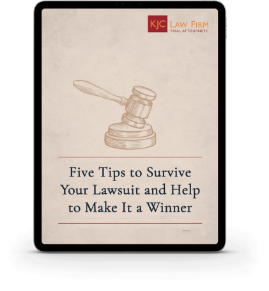The Massachusetts court system is one of the oldest of its kind in the country and handles hundreds of trials each year. You might be surprised to learn that only around 5% of personal injury cases actually make it that far, according to the Bureau of Justice Statistics. The majority of these types of cases are settled outside of court. However, if a personal injury case is taken to trial, the number of people in the mix can seem overwhelming. Here’s a breakdown of the people you’re most likely to encounter over the course of a personal injury trial, with a special focus on the courtroom itself.
The Parties
The parties are the participant(s) in a lawsuit or other legal proceedings. This includes:
- The plaintiff – the person or entity bringing suit against another. In certain types of civil cases, the plaintiff may be referred to as the “petitioner.”
- The defendant – the person or entity being sued. May also be referred to as the “respondent.”
H2: The Judge
The judge is the ultimate voice of authority in the courtroom. He or she is seated at an elevated desk, known as “the bench.” A judge’s duties can be broadly defined as:
- Maintaining a safe, efficient, and orderly courtroom
- Evaluating whether evidence is legal and proper, and therefore admissible
- Determining legal issues in a case
A judge may also have additional responsibilities if the defendant elects to proceed with a bench trial. In a bench trial, the case is presented to the judge alone, without a jury, and he or she must determine the validity of the plaintiff’s claims, as well as hand down a final decision. In a jury trial on the other hand, the judge is tasked with merely instructing the jury on any laws and standards they must use when determining whether or not the defendant is liable.
The Lawyers
The role of a lawyer (also known as an attorney or simply “counsel”) is to present their client’s case in the most convincing way possible, while sticking to proper courtroom procedures. This may involve conducting a thorough investigation into their client’s case, locating and interviewing witnesses, staying on top of any paperwork that needs to be filed, and guiding their client through important decisions both inside and outside of the courtroom. During the trial, lawyers are seated at counsel tables at the front of the courtroom, facing the judge, and may stand and walk around while speaking to the judge, jury, or witness(es).
The Jury
If a personal injury case moves to a jury trial, a group of up to 12 impartial individuals will be selected by the court to serve as the jury. The jury’s role in a civil personal injury trial is similar to their role in a criminal trial: they must determine if a defendant is liable for the plaintiff’s injuries. In some cases and locations, civil trials are heard by as few as six jurors. Alternate jurors are also selected in case a jury member becomes sick or otherwise indisposed. Alternates attend the trial and hear the case, but may not participate in deliberations until/unless they replace another juror.
The Witnesses
Witnesses are a critical part of any personal injury trial, as their testimony is what helps clarify the facts of the case in order to determine liability. Before giving testimony, they must “take the stand,” moving to a designated seat at the front of the courtroom next to the judge, and swear an oath to tell the truth. Witnesses in a personal injury trial are identified by their role in the case:
- An expert witness is a professional in a field related to the case who helps establish facts and authenticate evidence.
- An independent witness is a bystander who saw and/or heard the injurious event take place
- A non-independent witness is someone who was directly involved in the event(s)
The Court Reporter
The court reporter, also known as a stenographer, is typically seated near the witness stand. Their job is to capture the official record of the trial, which is eventually turned into a court transcript. The tricky aspect of this function is that all spoken words, audible sounds, and gestures must be captured verbatim and in real time. In order to keep up with the pace of proceedings, many court reporters use a stenotype or “steno” machine, which looks similar to a typewriter and essentially allows them to type in shorthand.
The Court Officer
If the judge is the captain of a courtroom, then the court officer is their first mate. The court officer’s role encompasses a variety of duties, all focused on keeping the proceedings running smoothly. This includes administering oaths, logging evidence, and, if necessary, escorting parties and witnesses to and from the courtroom. The position of a court officer, also called a bailiff, may be fulfilled by a law enforcement officer or, in some cases, a court clerk.
The Court Administrative Staff
It takes a village to keep the wheels of justice turning. Behind the scenes of every personal injury trial is a myriad of administrative staff members who you may or may not make an appearance in the courtroom itself. This includes (but is certainly not limited to):
- Court clerks
- Paralegals
- Court interpreters
- Americans with Disabilities Act (ADA) coordinators
- Alternative Dispute Resolution (ADR) coordinators
- Court clinicians
Facing a Personal Injury Trial?
Sheff & Cook (formerly KJC Law Firm and Sheff Law Offices) is one of Boston’s premier personal injury law firms. We have the resources to investigate your claim, hire the necessary experts, and get you the compensation you deserve. We understand the effects an injury or accident can have on you and your family, and we know the methods the insurance companies will try to use to blame you, even when it isn’t your fault. We’re here to help – schedule a free consultation with our team to start your journey to restitution.





